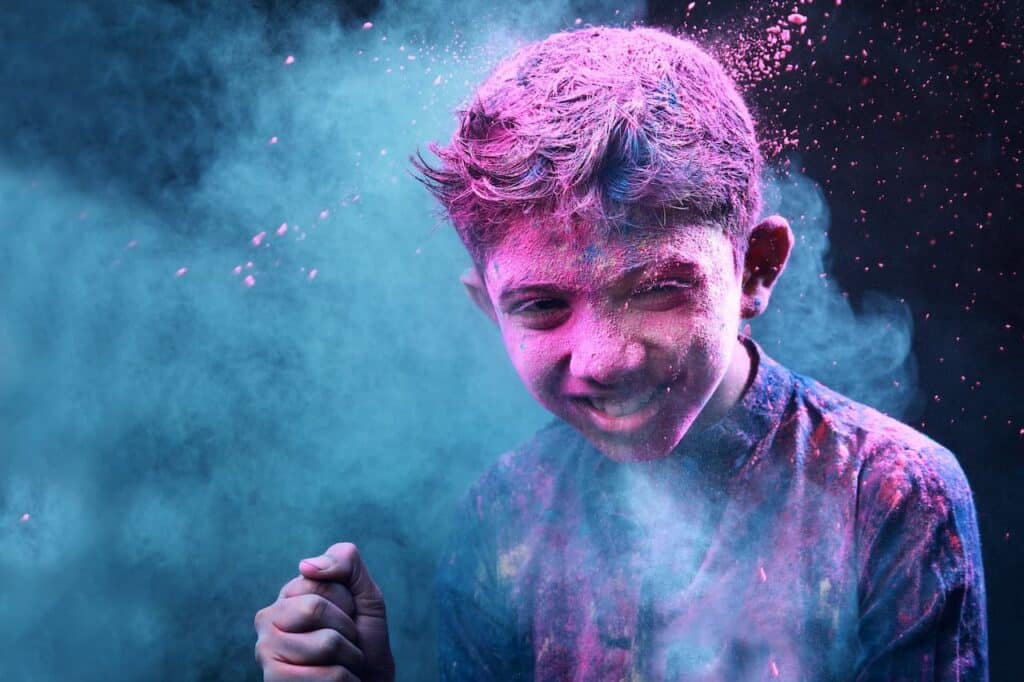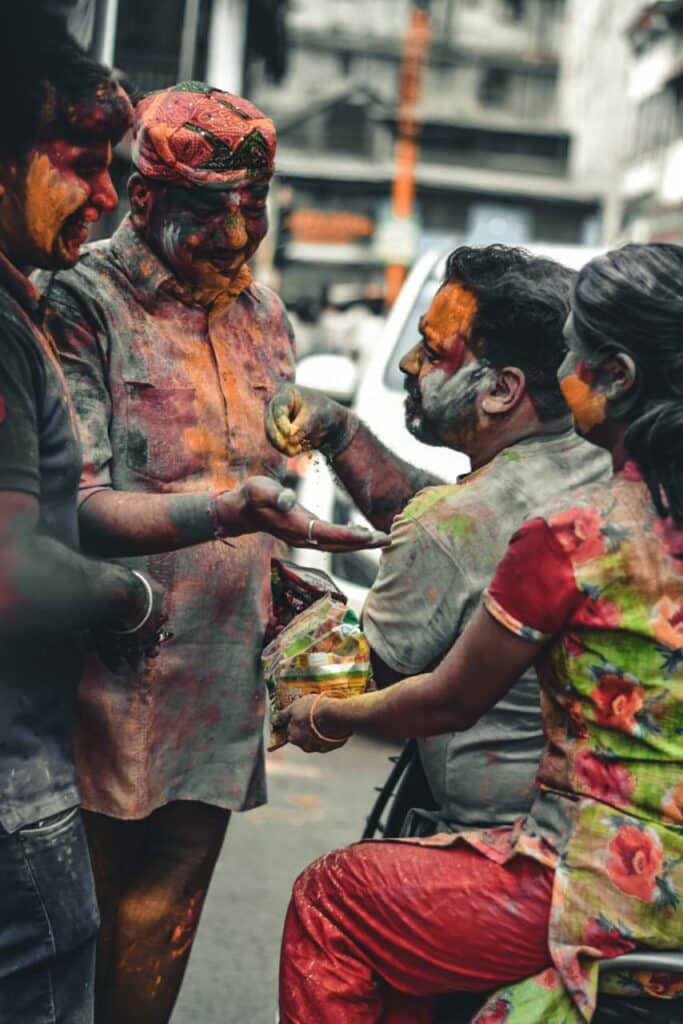Why Do We Celebrate The Festival Of Holi?
Unraveling the Magic of Holi – 9 Facts
Ever wondered Why Do We Celebrate The Festival Of Holi? The festival of Holi, also known as the Festival of Colors, is a vibrant and joyous celebration that takes place every spring in India. It is a time when people come together to welcome the arrival of spring and bid farewell to winter. Holi is renowned for its exuberant display of colors, creating an atmosphere of fun, happiness, and unity. Let’s explore the origins, significance, and traditions of this colorful festival.
Celebrate The Festival Of Holi & Origins and Significance of Holi
Holi has its roots in Hindu mythology and is linked to various legends associated with Lord Krishna. One popular story is about young Krishna’s playful antics, where he would smear colors on his friends’ faces using water guns called ‘pichkaris.’ This act symbolizes love, forgiveness, friendship, camaraderie, and overcoming differences.
Another famous legend is Holika Dahan, which tells the story of the demoness Holika and her pure-hearted nephew Prahlada. Despite being thrown into a bonfire by her evil brother King Hiranyakashipu, Prahlada survived unharmed with Lord Vishnu’s protection, while Holika perished in the flames. This story represents the triumph of good over evil and the importance of love and devotion.
Cultural Celebration and Traditions
Holi celebrations begin on the evening before the main day, known as Choti Holi or Holika Dahan. People gather around bonfires in their neighborhoods, burning effigies representing demons to symbolize the victory of good over evil. This event signifies purification and the casting away of negativity.
The following day, known as Holi or Rangwali Holi, is marked by a joyful play of colors. Friends, neighbors, and even strangers smear each other with vibrant gulal (colored powder) and spray colored water, creating an atmosphere filled with laughter and cheer.
Why Do We Celebrate The Festival Of Holi & The Play of Colors
The highlight of Holi is the play of colors. People drench each other with water and throw colored powders, creating a kaleidoscope of vibrant hues. This playful act symbolizes breaking barriers and promoting unity. Each color has a symbolic meaning: red represents love and purity, yellow signifies turmeric’s healing properties and wealth, green symbolizes vitality and new beginnings, and blue is associated with Lord Krishna’s skin tone and mischievous nature. Purple embodies power and ambition, while pink represents happiness and friendship.
Celebrate The Festival Of Holi With Traditional Holi Foods
No festival is complete without delicious food, and Holi is no exception. One popular treat is “gujiya,” a sweet dumpling made from flour stuffed with fillings like khoya (thickened milk), coconut, nuts, or dried fruits. Another traditional dish is “thandai,” a refreshing drink made from milk, almonds, fennel seeds, and cardamom powder, often containing “bhang,” an intoxicating ingredient whose consumption varies based on regional laws.
Safety Measures During Holi
While Holi is all about fun with colors, it’s essential to take precautions to protect your skin and hair from harsh chemicals in synthetic colorants. To safeguard your skin, apply oil or moisturizer before playing with colors to prevent dryness and irritation. For hair, apply coconut oil or another suitable hair oil to create a protective layer.
Choosing Safe and Natural Colors
Using natural and herbal colors made from ingredients like turmeric, henna, flowers, and vegetable dyes ensures safety and promotes eco-friendly celebrations to stop plastic going into the environment. These organic colors are available in markets or can be made at home, providing a safer alternative for the skin and hair while protecting the environment.
Holi Celebrations Around the World
Holi is primarily celebrated in India, but its popularity has spread across the globe. In India, Holi is a nationwide celebration that brings people together regardless of their backgrounds. The streets are filled with laughter, music, and dancing as everyone indulges in vibrant colors and water fights, visiting friends and family, exchanging greetings and sweets, and spreading love.
Holi-Inspired Festivals Worldwide
Many countries have embraced the spirit of Holi by organizing their own color festivals inspired by this ancient tradition. For example, “The Festival of Colors” in Utah, USA, attracts thousands of participants who come together to share joy through music and brightly colored powders. Similar celebrations occur in countries like Nepal (Fagu Purnima), Trinidad & Tobago (Phagwah), Guyana (Phagwa), Mauritius (Holi), and Spain (La Tomatina).
Celebrate The Festival Of Holi & Environmental Impact of Holi
While Holi is a joyous occasion, it’s important to consider its environmental impact. Excessive use of water and synthetic colors can lead to pollution and waste. To conserve water, opt for dry powdered colors and organize community events with limited quantities of colored water. Using organic and natural colors made from fruits, flowers, or herbal sources eliminates harmful chemicals and promotes sustainable practices. Reducing waste by using biodegradable plates and avoiding single-use plastics contributes to a cleaner environment during and after the celebrations.
Celebrate The Festival Of Holi Conclusion
Holi encapsulates love, unity, vibrancy, and joy as people come together to celebrate the arrival of spring. Understanding its origins helps us appreciate its cultural significance, while learning about safety measures ensures everyone can participate without harm. As we explore Holi celebrations worldwide and its influence on popular culture, we see how this festival has transcended borders. By adopting eco-friendly practices, we can ensure that our festivities leave a positive impact on both ourselves and the environment. Let’s embrace the magic of colors during Holi, spreading happiness and goodwill to all.






